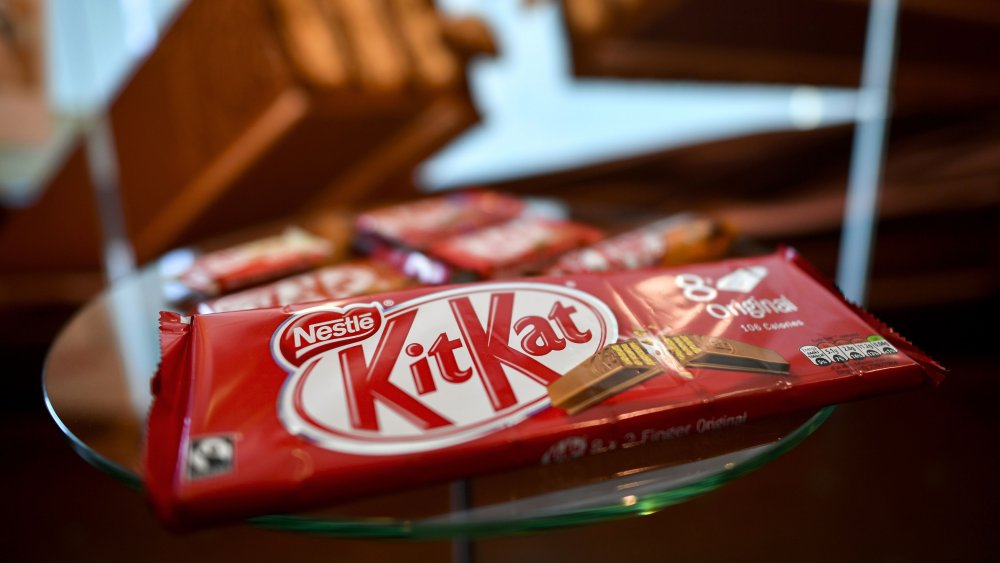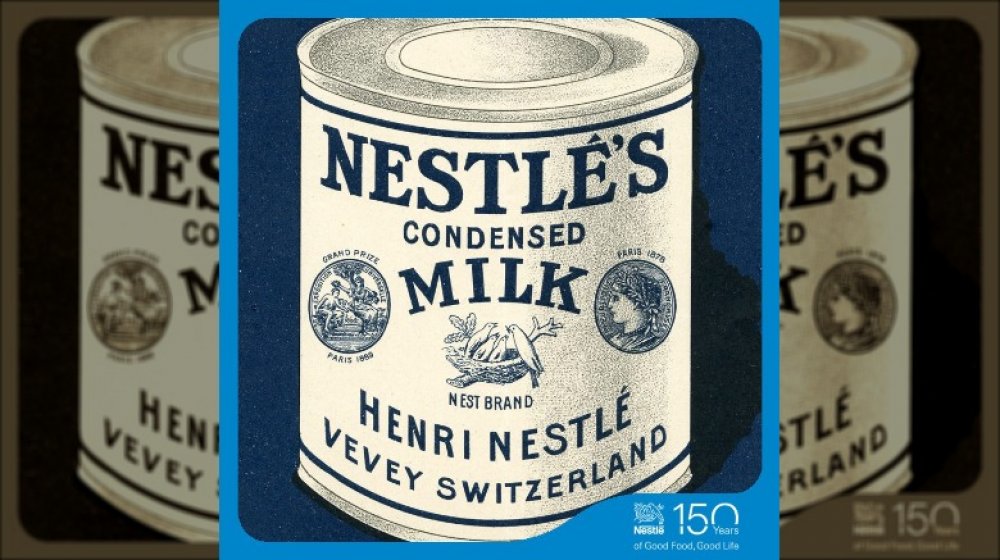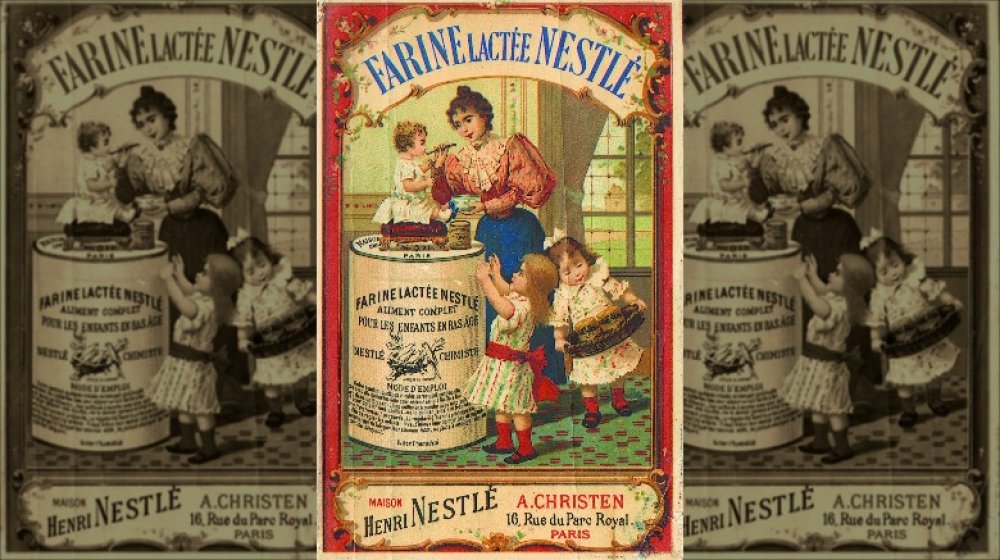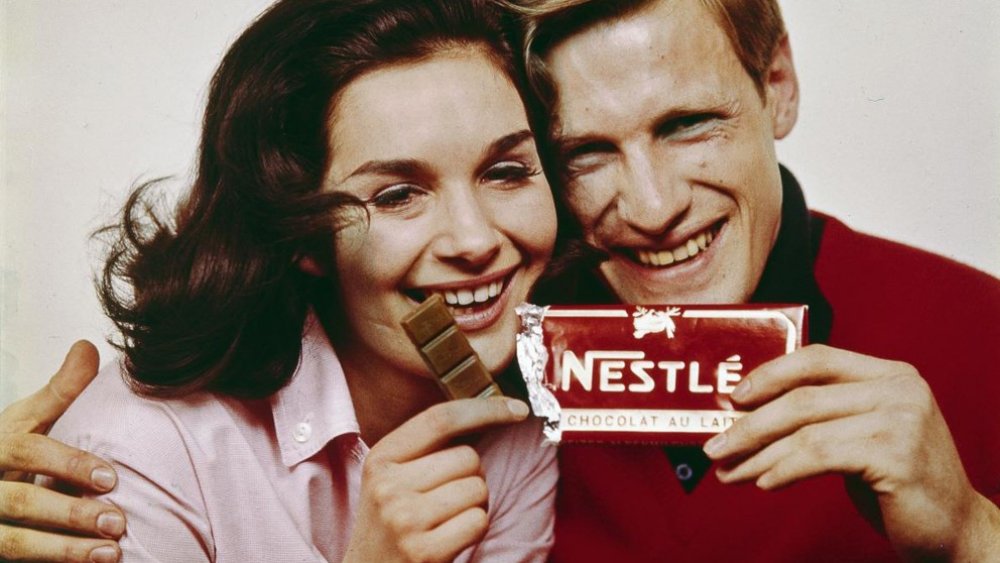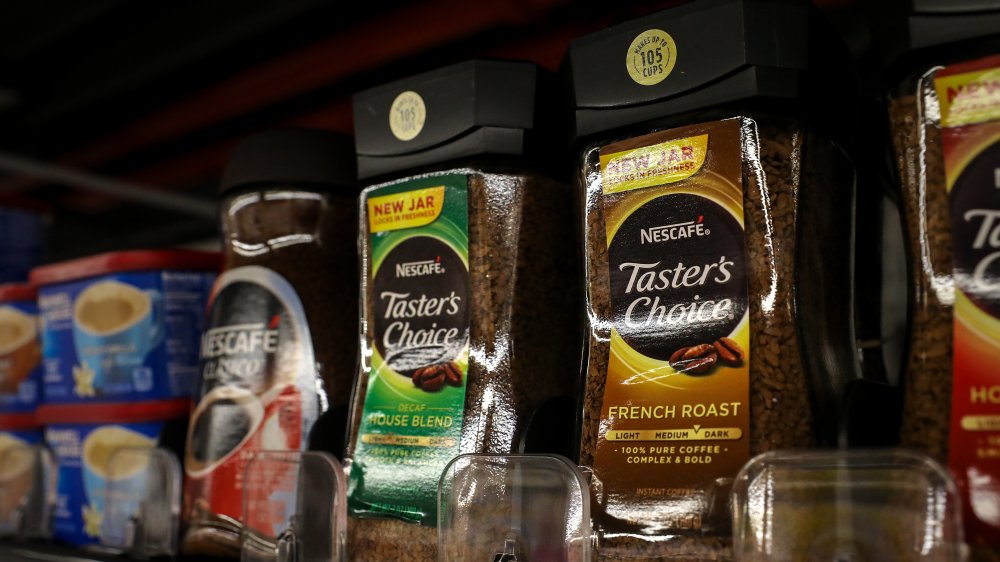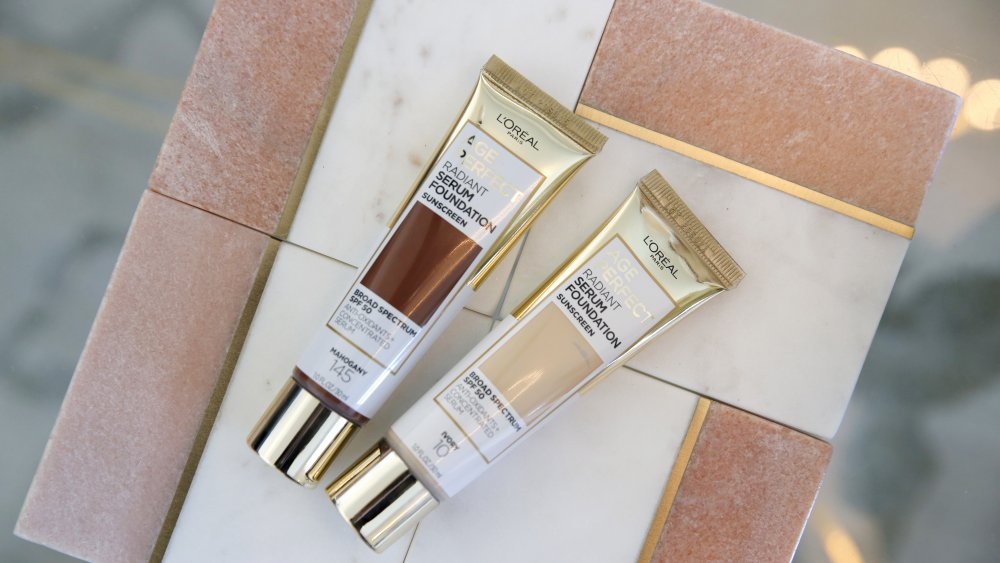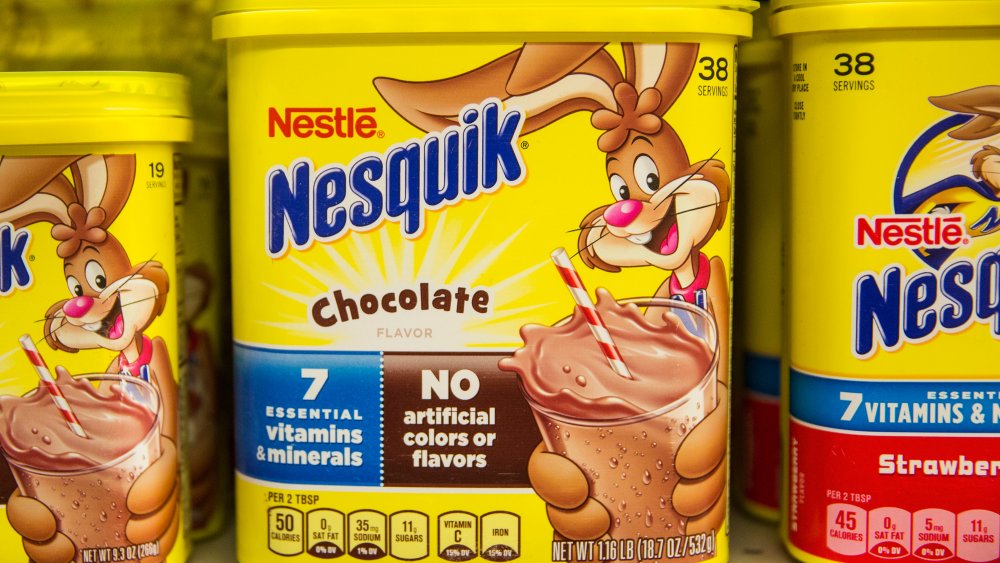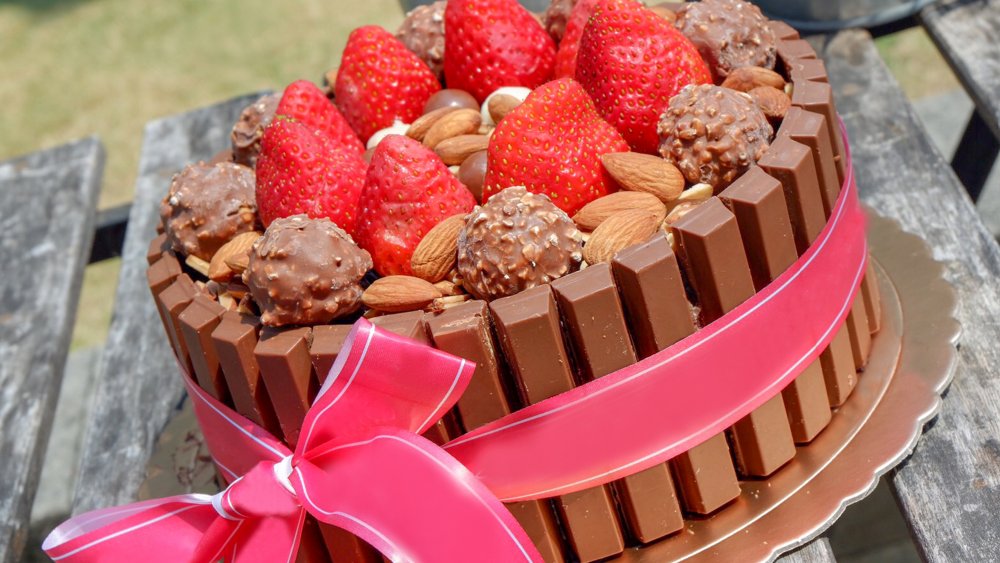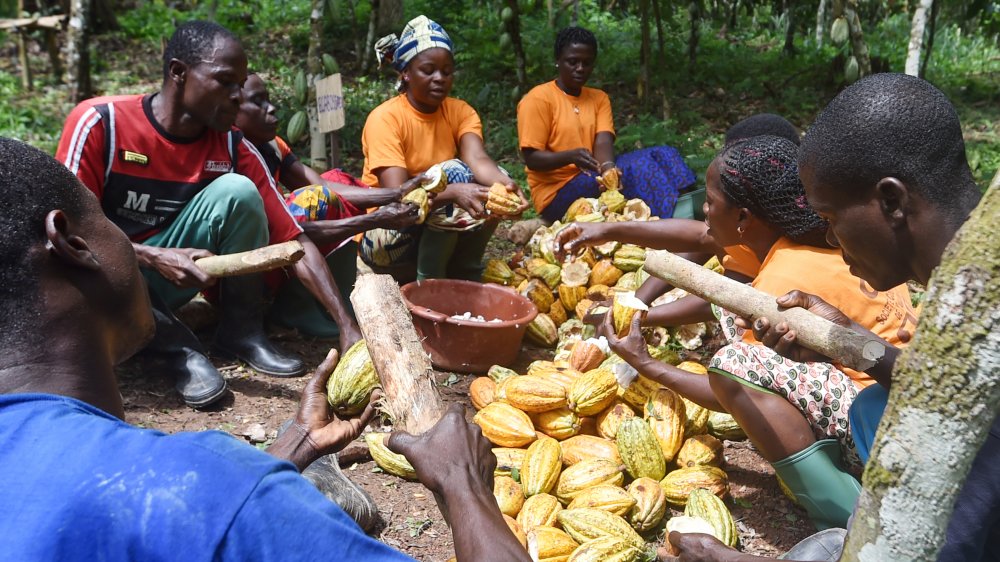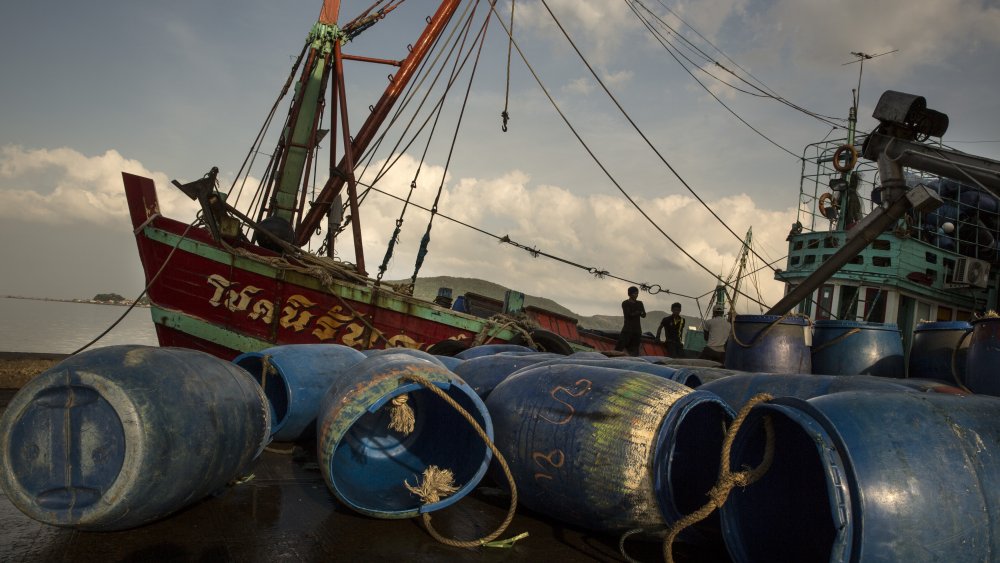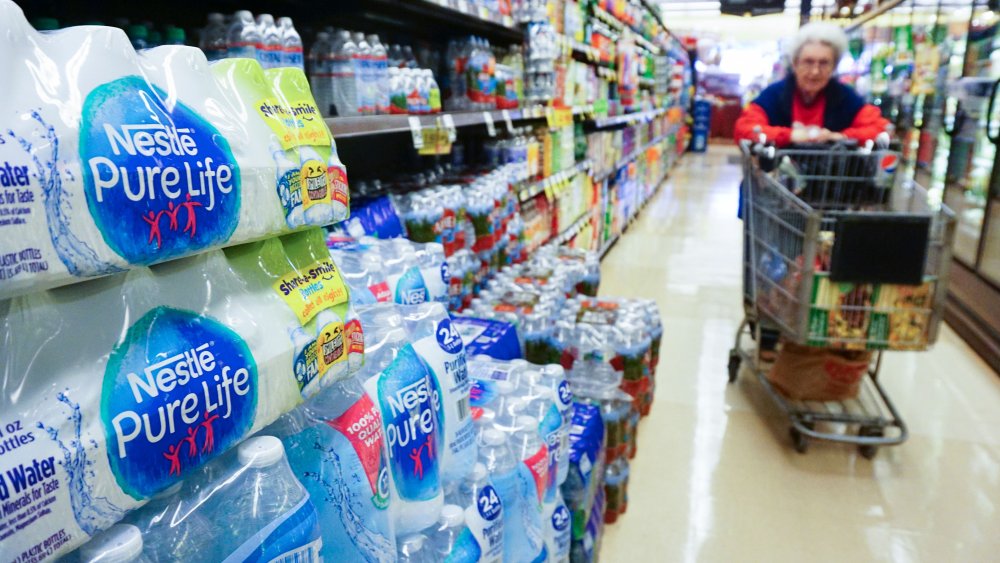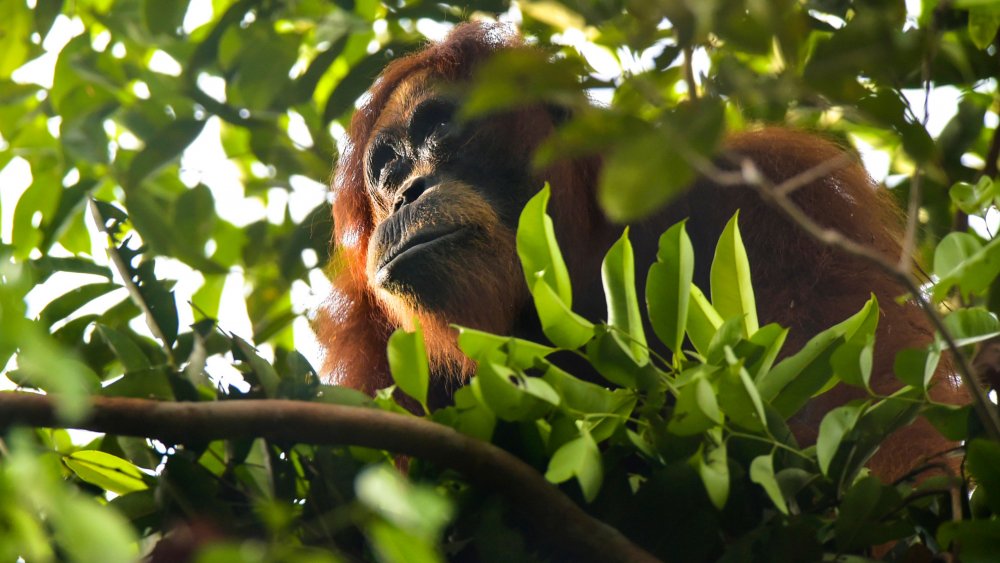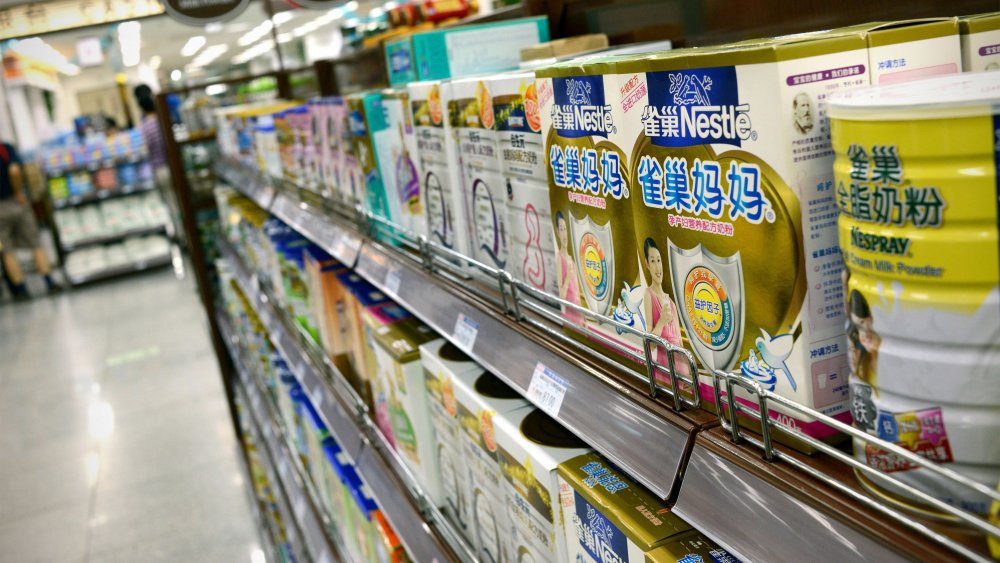The Untold Truth Of Nestle
When it comes to massive conglomerations and corporations, Nestle is right up there at the top. They're so big that it's almost impossible to imagine: according to Forbes, they're worth around $280 billion... give or take a few billion.
When you think of Nestle, what do you think of? Candy? Nesquik? Nescafe? Childhood memories of trick-or-treating, and hoping to see all your favorite candy bars in your bag? Or, do you think of controversy? Boycotts? Some serious hate?
Any and all of the above might be pretty accurate. While Nestle has undoubtedly had a far-reaching impact on the shape of the commercial food industry, they're also highly controversial. They're definitely not all candy and sweets, and there's some seriously dark stuff in their past... and their present. And here's the thing — they own so, so much that even if you think you're doing your best to boycott them, you probably still have some of their products in your kitchen — or bathroom — right now.
Nestle started with milk
Nestle got its start way back in 1866, and even though they were founded in Switzerland, their flagship product wasn't the one you're thinking of. According to their official company history, the whole thing started when a pair of brothers named Charles and George Page saw an opportunity. The Swiss countryside had literal tons of fresh milk available, and — using know-how they'd gotten back in their native America — they set up a production facility to turn that fresh milk into condensed milk. And that was a big deal, as it made the milk last much, much longer.
Around the same time, another immigrant — the German-born Henri Nestle — was working on another milk product in Switzerland. The pharmacist wanted to come up with a nutritious product for babies, and developed a formula of milk, flour, and sugar. Within just a few years, the two companies were engaged in some serious competition: the Page brothers started selling formula, and Nestle started selling condensed milk.
The Page's company — Anglo-Swiss — had their expansion plans stymied with the death of George Page. By 1902, they were selling off sections of their operations, and finally merged with Nestle to form the basis of the giant conglomeration that dominates the global food market today.
Henri Nestle had a series of failed ventures before he struck gold
The name on the company comes from Henri Nestle, and his story is one that just proves it's never too late to come up with that one brilliant idea. According to official company history, Nestle was 53 years old when he opened his infant formula company in Vevey, Switzerland. It was a small venture that turned into something very, very big, and it was by no means his first attempt.
Before his infant formula proved to be the success he'd been chasing, he's also tried developing a series of other products, including fertilizers, cement, liquefied gas, mineral water, liqueurs, and vinegar.
Success doesn't just come with a good product, it has to be a product that fills a need. Nestle developed his infant formula at a time when industrialization and urbanization were happening at a rapid pace, but infant mortality was still high. Fortunately, science and nutrition was advancing just as fast, so when Nestle partnered with doctors and nutritionists, the resulting formula was one that just worked.
Nestle helped invent milk chocolate
If you reach for a bar of milk chocolate over dark chocolate, you should thank Henri Nestle.
Milk chocolate is a surprisingly recent creation, and the seeds of the idea were planted in the mid-1800s. Nestle was living and working in Vevey, and as luck would have it, he had a neighbor and good friend named Daniel Peter. Peter's family were candlemakers, but when he saw an opportunity presenting itself in the growth of the chocolate industry, he decided that was the way he was going to go. And, when he saw Nestle's process of combining milk and flour for formula, he started to wonder if he could do the same with milk and chocolate.
It took years of experimentation, but Peter finalized the recipe for the world's first milk chocolate in 1887. According to What's Cooking America, it was a huge hit. By 1901, there was such high demand for this new chocolate that Peter couldn't keep up with it on his own, and in 1904, he and Nestle agreed that they would produce a chocolate with high sugar and less cocoa, which would be sold as "Nestle" chocolate. By 1929, the merger was complete.
Nestle invented instant coffee as a solution to a big problem
According to Forbes, Nescafe is the largest division within Nestle. It's worth around $17 billion today, and the whole thing only started thanks to a very unfortunate set of circumstances.
In 1929, the chairman of Nestle was Louis Dapples, a former employee of a bank with the hefty name of Banque Francaise et Italienne pour l'Amerique du Sud. And, also in 1929, the bank had a huge problem: when the stock market crashed, it took coffee prices crashing down with it. The bank suddenly found themselves sitting on a huge amount of coffee they couldn't sell for a profit, so they reached out to Nestle and asked them if they could come up with a way to preserve the coffee, and help save their investment.
It took around four years, but Nestle chemists finally came up with a method of turning coffee into a powder that could be re-hydrated. They launched Nescafe in Switzerland in 1938, and it was in 29 more countries by 1940. The timing was fortuitous: World War II was kicking off, and people around the world were looking for a way to make sure they could keep coffee as a part of their routine. With Nestle and Nescafe supplying mainly U.S. troops with their much-needed coffee boost, demand was so great they opened several more production facilities in the next few years.
Nestle owns way more than you think
Sure, you know Nestle is behind products like Nescafe and Nesquik, it's pretty obvious just by the name. But some of the names, well, it's not so obvious they're Nestle-owned.
There are a ton of foodstuffs, for sure. From your baby's favorites like Gerber and Cheerios to your teens' go-to snacks of Hot Pockets and Toll House, those are Nestle, too. They're also the company behind Lean Cuisine, Stouffers, Haagen-Dazs, and DiGiorno.
They also have a huge pet food division, owning brands like Purina, Fancy Feast, Friskies, Pro Plan, Alpo, and Beneful. Then, there's the bottled water sector, which includes Poland Spring, Perrier, S. Pellegrino, Vittel, and PureLife.
Even if you give all of those products a miss, there's still a good chance you've got some Nestle on your shelves. Nestle is one of the biggest shareholders in L'Oreal, who in turn owns brands like Maybelline, Garnier, Urban Decay, Essie, Ralph Lauren Fragrances, YvesSaintLaurent, Biotherm, and Lancome.
All hasn't been well with Nestle's Nesquik
Way back in ye olden days of 2015, Nestle was on the receiving end of a complaint from the Children's Food Campaign. The complaint was centered around Nesquik, and packaging that advertised it as a "great start to the day." The problem? The high sugar content.
According to the Independent, Nestle UK was ordered to remove the claim by the Advertising Standards Authority, who ruled that the claim — along with the child-friendly design and happy bunny — gave the impression that it was a healthy addition to a daily breakfast, and that was misleading. One 200 ml serving (less than 8 ounces), after all, contained 20.3 grams of sugar, and there's no way that's anywhere near the definition of healthy.
But, if you love your Nesquik, good news was on the horizon. In the same year, Nestle promised (via Reuters) to reduce the sugar content of Nesquik by 15 percent in the chocolate and 27 percent in the strawberry. Nutritionists were still quick to point out that it didn't make Nesquik anywhere near healthy, and yet another reduction in the sugar content of its chocolatey milk drink happened in 2017 (via MarketWatch).
Nestle isn't big into candy anymore
Nestle might be well-known for their candy, but strangely, they're not actually that involved in that business anymore. In 2018, Nestle sold their confectionery business to Ferrero, and according to the official press release, they got a cool $2.8 billion for that section of their business.
That included candy like Butterfinger, Baby Ruth, SnoCaps, Gobstopper, LaffyTaffy, SweeTarts, and Nerds, but KitKat wasn't included in the sale. Still, those are some pretty iconic candies, and you'd think the sale would have had a huge impact on their bottom line, right?
As famous as all those candies are, the section of the business Nestle sold only amounted to about 3 percent of their entire U.S. Nestle Group sales. Why offload these iconic products? CEO Mark Schneider said the move "...allows Nestle to invest and innovate across a range of categories where we see strong future growth and hold leadership positions, such as pet care, bottled water, coffee, frozen meals, and infant nutrition." Candy? Not so much.
Nestle has a huge problem with child labor
In 2015, The Guardian reported on troubling findings: more than 10 years after Nestle issued a promise to end child labor in their supply chain, reports by the Fair Labor Association — commissioned by Nestle — found farms in Ivory Coast were still using child workers by the dozen.
Nestle's code of conduct — which farms are beholden to abide by — forbids the use of child labor. But it's a rule that's not well-enforced, with many children being labeled as "family workers," while others simply had their age ignored. The problem came to light in 2001, and a massive lawsuit started in 2005 that featured three plaintiffs who testified that they had been the victims of human trafficking, stolen from their homes and forced to labor away on cocoa plantations.
The outrage absolutely came, and it wasn't just Nestle that was caught up in the scandal — Hershey and Mars were also found sourcing chocolate from plantations that relied on child labor. Surely, that's the kind of thing that stops with publicity, right?
No, says The Washington Post. They visited plantations in 2019, and found child workers as young as 12, toiling away on the cocoa farms. When they asked representatives of all three companies about their promise to remove child labor from their supply chain and guarantee their chocolate wasn't harvested by young teens, one responded: "I'm not going to make those claims."
Nestle has had some serious issues with slavery
In 2016, Nestle went public with some shocking news (via The Guardian): they had investigated their own supply chains in Thailand, and found they were working with suppliers who were involved in modern-day slavery.
Slavery in Thailand's seafood industry was so widespread they — and independent media reports — found there was almost no way for any company who sourced seafood from Thailand to avoid it. And here's the surprising thing: groups like the Freedom Fund lauded their transparency.
While Nestle was optimistic that their reveal would have a positive impact on supply chain accountability and the lives of workers, and the Freedom Fund's CEO, Nick Grono, agreed, saying: "Nestle's decision to conduct this investigation is to be applauded. If you've got one of the biggest brands in the world proactively coming out and admitting that they have found slavery in their business operations, then it's potentially a huge game-changer and could lead to real and sustained change in how supply chains are managed."
But just a few years later — in 2018 — The Sydney Morning Herald reported that Nestle had issued a warning: proposed legislation in Australia that would require companies to disclose their efforts to stop slavery in the supply chain would end up costing consumers some big bucks — making people wonder what side they were really on.
Nestle's water use is highly controversial
In 2018, The Guardian shared the heartbreaking story of a 6-year-old boy named Theron. For nearly a year, he was plagued by a painful rash. The reason it kept coming back? He, his family, and others living in the same Six Nations indigenous reserve just outside of Toronto had no access to drinking water. It gets worse: those in the community had no taps, no toilets, and no showers. For water for cleaning and other non-drinking uses, they made regular journeys to a public tap, five miles away. For drinking water, they had to go into town to buy bottled water.
Where does Nestle come into the story? Just a stone's throw from where people live without clean running water, Nestle pumps nearly 100,000 gallons of springwater from the nearby Erin well — a well that sits on Six Nations land.
And that's not the only place that has a serious problem with Nestle extracting water for their bottling plants. In 2019, conservationists pointed to the plight of California's Strawberry Creek as indicative of the problems Nestle was causing. Where the area was once made of a series of streams and waterfalls, many were running dry — a consequence, they said (via The Guardian) of Nestle's siphoning of 45 million gallons out of the ecosystem.
Meanwhile, in 2018, Nestle's water sales brought in around $4.5 billion in North America alone.
Nestle's reliance on palm oil is highly controversial
In 2019, Indonesia was devastated by raging fires. The effects were catastrophic — in addition to the damage done by the flames themselves, millions of children were put at risk of serious complications due to the air pollution. So, what caused them in the first place?
Palm oil producers. According to the Independent, an analysis by Greenpeace found 30 palm oil producers were at least partially responsible for the fires. Of those, 28 sold palm oil to Nestle.
Nestle issued a statement voicing their concern, and their commitment to making sure their products weren't made with palm oil associated with the fires. That sounds great, but also in 2019, Nestle was suspended from the Roundtable on Sustainable Palm Oil and forbidden from making claims that they used only sustainable palm oil (via ABCNews). The organization cited Nestle's incomplete reporting on their palm oil sourcing, and at the same time, Greenpeace stepped in to say that even the RSPO wasn't doing nearly enough to keep the industry from destroying the habit of endangered animals like the orangutan.
Nestle has been fighting baby formula controversies since the 1970s
Infant formula may be a huge part of Nestle's history, but starting in the 1970s, it became one of their most controversial products. That, says Business Insider, is when Nestle found itself on the receiving end of accusations that they were specifically targeting mothers in developing countries, and selling them formula that was more expensive and less nutritious than breast milk. At the same time research was showing a baby's chance of survival increased up to six times when breastfed, Nestle was accused of pushing their formula as a bit of Westernization that was absolutely within reach. Even hospitals were accused of working with Nestle to push their formula, and those same Third World mothers began trying to stretch the formula by diluting it, oftentimes with contaminated water.
The result? Millions of babies died.
That was decades ago, and here's the shocking thing: according to The Guardian, Nestle was still being condemned by groups like the Changing Markets Foundation for making misleading claims about its formula in 2018. They pointed to some serious inconsistencies: in South Africa, for example, sucrose was one ingredient in formula. In Brazil and Hong Kong, however, sucrose-free versions weren't just being sold, but they were being marketed as healthy... because they contained no sucrose. The practice was condemned as "especially unethical."
Nestle had a big pet food lawsuit
In 2014, pet lovers across the country were horrified when one of the largest pet food brands — Purina and their Beneful brand — came under fire. According to the Daily Beast, it started with Frank Lucido's German shepherd. After ending up at the vet with symptoms of poisoning, one of their other dogs died suddenly. Lucido found it wasn't just his dogs — there were hundreds of reviews on Consumer Affairs, stating the same thing had happened over and over again. They estimated the death toll was in the thousands.
The entire thing was traced to an additive called propylene glycol, which has been approved by the FDA but — according to veterinarians — isn't something you want to see in your dog food. Add in an accusation that Nestle was using moldy grains and introducing mold and mycotoxins into the food, and they had a lawsuit on their hands.
But ultimately, it was good news for Nestle: the lawsuit was ultimately dismissed by a judge who wasn't happy with the level of expertise he saw in their key witnesses (via Top Class Actions).
